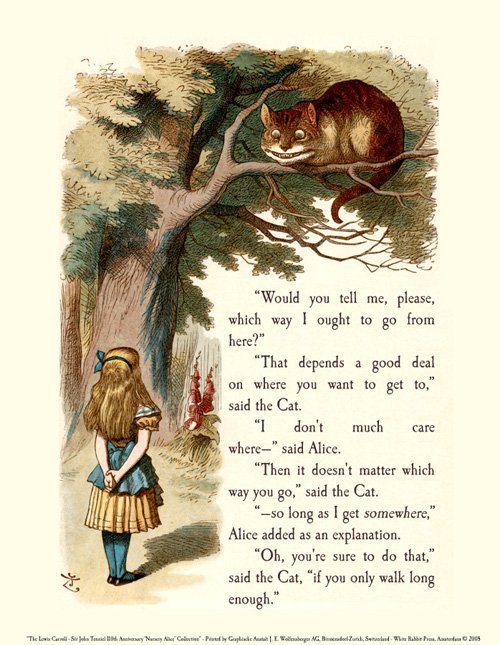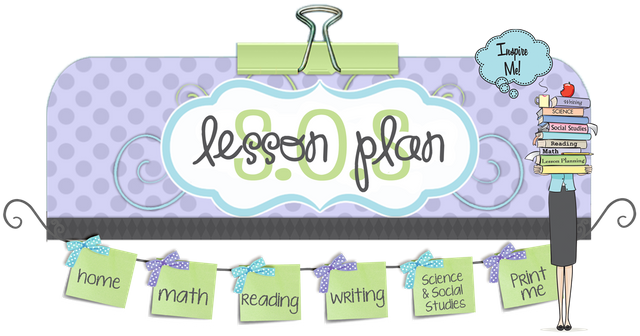EDUCATION SERIES #2: Understanding by Design (UbD) - Going Backward in Order to Move Forward
In a more traditional way of designing lesson plans, teachers primarily base the construction of their plans on the curriculum the school provides or carry on with an existing one. In the absence of a curriculum, which is a ridiculous thought, teachers may retreat to the textbooks and workbooks given to them and design their lesson plans from scratch. In any case, a well-designed lesson plan should be the goal of a teacher if he/she wants to be effective in his/her teaching.

PHOTO CREDIT: PINTEREST.COM
Approaches to the design and construction of effective lesson plans are readily available now in our digital age and all of them have advantages and limitations. However, one approach stands out since it was introduced in 1998 by Grant Wiggins & Jay McTighe: Understanding by Design.
Understanding by Design (UbD), also known as “backward design”, is an approach to curriculum design where setting of goals comes first then the instructional methods and any forms of assessment follow.
UbD is the reverse of the traditional approach to constructing educational curriculum where a list of content that will be taught is created and/or selected.
In backward design, the initial focus is on the objectives that need to be accomplished by the students in order to understand what a particular lesson is all about. The teacher then figures out what assessment is best to measure those objectives, and then develops activities that are most appropriate to reach those objectives.
UbD Design Process
The UBD design process is organized into three stages or phases: (1) Identify desired results (objectives); (2) Determine acceptable evidence (assessment); (3) Create the learning plans (lesson plans). Let’s take a closer look at each one of them.
Identify Desired Results (Stage 1)
In traditional lesson planning design, this is called the objectives of the lesson plan.
Identifying clear and measurable objectives is one of the keys to an effective lesson plan. If you don’t know where you are going, then you will never know when you get there.

PHOTO CREDIT: BOOKMANIA.ME
Stage 1 focuses on acquisition of knowledge, which seeks to help learners acquire factual
information and basic skills; transfer of learning, which seeks to support the learner’s ability to transfer their learning autonomously and effectively in new situation; and meaning making, which seeks to help students construct meaning (like come to an understanding) of processes and important ideas.
Backward Design requires that objectives are defined first before anything else can happen. This will always ensure that the teacher knows the direction of the class and will serve as a constant reminder of the purpose of doing the lesson.
Backward Design leads the teacher to ask the questions: What should my students know, understand, and be able to do? What is worthy of understanding?
This leads us to formulating our “Enduring Understanding” and “Essential Questions” statements. However, most teachers who are not used to backward design are having difficulties formulating these statements.
To help teachers with this issue, we use the “40/40/40 rule”. This rule asks the questions: what’s important that students understand for the next 40 days, what’s important that they understand for the next 40 months, and what’s important that they understand for the next 40 years?
Let’s construct our Stage 1 design.
Goals: Create a logo for a company website using Adobe Illustrator CC 2015 based on the ARMM principles.
Essential Questions:
- What is the importance of a logo?
- Why is logo design an important aspect in creating a logo?
- What makes a logo a great logo?
Enduring Understanding:
- A logo identifies a concept or an organization and it conveys the owner’s intended message to the audience.
- A logo that is simple, timeless, versatile, easy to remember, and appropriate makes a good logo.
- The ARMM model provides a basic concept of how an effective logo is designed.
Student will know…
- Basic concept on logo design.
- The importance of a logo in conveying a message.
- A sophisticated or complicated logo is not superior over a simple one.
Students will be able to…
- Utilize Adobe Illustrator CC to design a logo.
- Apply the principles of ARMM when designing/creating a logo.
- Design a logo that conveys the appropriate message to the audience.
Note: The lists above are not exhaustive. It is recommended to list as much as you can to clearly articulate what you want students to do and understand.
Determine Acceptable Evidence (Stage 2)
In this stage, the following questions are key:
- How will we know if students have achieved the desired results?
- What will we accept as evidence of student understanding and their ability to use (transfer) their learning in new situations?
- How will we evaluate student performance in fair and consistent way.
In order to answer the preceding questions, we need to establish assessment evidence that reflect the desired results in Stage 1. We have two types of assessment broadly expressed as “performance task” and other evidence.

PHOTO CREDIT: MLIVE.COM
Given a new and unique situation, students are asked to apply their learning to assess their understanding and ability to transfer their learning. In performance task assessment, when students truly understand:
- they can explain the concepts, processes, and principles and transfer their learning to others.
- they are able to interpret data, text, and experience through images, analogies, models, and stories.
- they can apply what they learned by effectively adapting to the new environment;
- they are able to see the big picture as they have wider perspective;
- they have empathy as they have the ability to see themselves in others; and
- they have self-knowledge as shown by productive habits of mind, self-awareness, and sufficient understanding of learning and experience.
Other evidence such as traditional quizzes, tests, observations, and work samples will also help teachers to determine what students know and can do.
Let’s construct our Stage 2 design.
Performance Tasks
- Research and study effective logos and logo designs
- Apply the ARMM model on the logo design
Other Evidence
- Design a rough draft or hand-drawn logo
- Evaluate design using a rubric
Create the Learning Plans (Stage 3)
In this stage, teachers plan the most appropriate lessons and learning activities to address the different goals identified in Stage 1. To accomplish this, here are the key questions teachers need to ask:
- How will we support learners as they come to understand important ideas and processes?
- How will we prepare them to autonomously transfer their learning?
- What enabling knowledge and skills will students need to perform effectively and achieve desired results?
- What activities, sequence, and resources are best suited to accomplish our goals?
In designing Stage 3, teachers should not only focus on the presentation of information or presenting basic skills for acquisition, but also extending the lessons to help students understand what’s going on and let them transfer the learning experience to their peers.

PHOTO CREDIT: LESSONPLANSOS
Let’s construct Stage 3 design.
Learning Activities and Planned Lesson Instruction:
- Lesson #1: The Science of Logo Design (ARMM model)
- Lesson #2: What Makes Logos Effective
- Lesson #3: Failed Logo Designs and What Are the Causes
- Lesson #4: Learning Adobe Illustrator CC 2015 Basics
- Lesson #5: Adobe Illustrator CC 2015 Essential Tools for Logo Design
Summary
Backward Design or Understanding by Design (UbD) is a framework that offers a planning process and structure to guide curriculum, assessment, and instruction. Its two key ideas are to: 1) focus on teaching and assessing for understanding and learning transfer, and 2) design curriculum “backward” from those ends.
For a number of years, UbD has been effective in planning and structuring instructions and has become popular among educators in all levels.
References:
- http://www.storyboardthat.com/articles/e/what-is-ubd-understanding-by-design
- http://www.ascd.org/ASCD/pdf/siteASCD/publications/UbD_WhitePaper0312.pdf